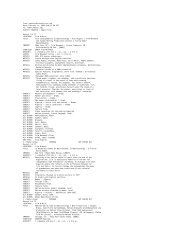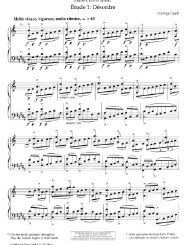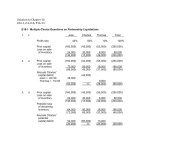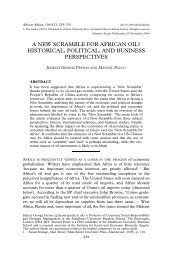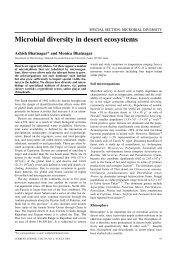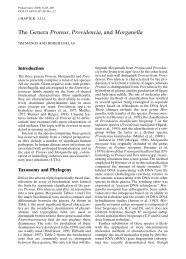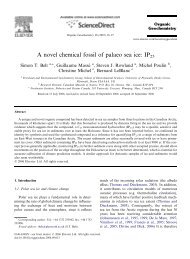Analysis by Key: Another Look at Modulation
Analysis by Key: Another Look at Modulation
Analysis by Key: Another Look at Modulation
Create successful ePaper yourself
Turn your PDF publications into a flip-book with our unique Google optimized e-Paper software.
CARL SCHACHTER<br />
linear, contrapuntal structure. The tonicized C minor in the Bach Allemande is<br />
indeed part of the return to I: as Ex. 9 shows, it moves within V from Bb to D,<br />
and the D goes on to the tonic Eb . The return to I, then, is not from VI (C<br />
minor), but from a prolonged V th<strong>at</strong> encompasses the toniciz<strong>at</strong>ion of VI. The<br />
area governed <strong>by</strong> V changes its key focus several times: first from Bb major to C<br />
minor, then through several tonicized chords (Ab major and F minor) th<strong>at</strong><br />
belong both to C minor and to Eb ma jor, and before the final cadence, to Eb; the<br />
core of these occurrences is a rising linear progression Bb (tonicized) - C<br />
(tonicized)- D- Eb .<br />
Because the key areas of the Allemande function within a contrapuntal web of<br />
gre<strong>at</strong> (but typically Bachian) complexity, we cannot begin to understand them<br />
without coming to terms with the voice-leading structure of the piece. In Ex. 9,<br />
I have tried to illumin<strong>at</strong>e the parts of this structure relevant to the subject of this<br />
essay; I suggest th<strong>at</strong> the graphs be read <strong>at</strong> first in the order presented, from<br />
background to foreground. Much of the difficulty posed <strong>by</strong> the piece results<br />
from the many transfers in register and from part to part (e.g. bass to soprano).<br />
One structure disguised <strong>by</strong> such transfers is the rising fourth-progression from<br />
Bb to Eb . Starting with level (b), the example shows th<strong>at</strong> this large-scale linear<br />
progression forms an enlargement of a motivic element fundamental to the<br />
Allemande and indeed the entire Suite. The list of keys (eleven in ten bars of<br />
music!) comes from the Grove article, whose author has underlined the<br />
important, structural keys and has placed the transient ones in parentheses.<br />
Note the curious place where a structural return to Eb is read; as in Tovey's<br />
account of the E minor Prelude, this comes from analysing <strong>by</strong> key without<br />
considering voice leading and chord prolong<strong>at</strong>ion.<br />
Schenker's early writings about modul<strong>at</strong>ion also sometimes overlook linear<br />
factors, but he does not make the mistake of equ<strong>at</strong>ing all key successions with<br />
chord progressions. In his Harmonielehre, he distinguishes among three<br />
c<strong>at</strong>egories of chrom<strong>at</strong>ic elabor<strong>at</strong>ion: toniciz<strong>at</strong>ion, where there is no sense of<br />
departure from the tonic key; illusory keys (Scheintonarten), where the di<strong>at</strong>ony,<br />
or di<strong>at</strong>onic framework (Di<strong>at</strong>onie), recedes into the background but still exerts a<br />
controlling influence; and true modul<strong>at</strong>ions, which do not return to their point<br />
of origin, and which remain independent of any overarching di<strong>at</strong>ony. 18<br />
Schenker's illusory keys behave more or less as the Grove article indic<strong>at</strong>es:<br />
they can be regarded as expansions (and sometlmes as chrom<strong>at</strong>ic equivalents) of<br />
di<strong>at</strong>onic scale steps. He cites the C major passage in the exposition of the first<br />
movement of Beethoven's Piano Son<strong>at</strong>a, Op.7 (bs 81-9) and shows - very<br />
convincingly, I think - th<strong>at</strong> the V-I of C major represents an expanded and<br />
chrom<strong>at</strong>ically elabor<strong>at</strong>ed VI-II progression in the locally governing key of Bb<br />
maor.<br />
Schenker's main example of real modul<strong>at</strong>ion is the development section of the<br />
same movement, about which he says, 'the keys are real keys, and their<br />
sequence is: C minor, Ab major, F minor, G minor, A minor, D minor. It would<br />
be illicit to do violence to this situ<strong>at</strong>ion <strong>by</strong> explaining all these keys or part of<br />
them as consequences of the Bb major di<strong>at</strong>ony which concluded the first part of<br />
300 MUSIC ANALYSIS 6: 3, 1987



